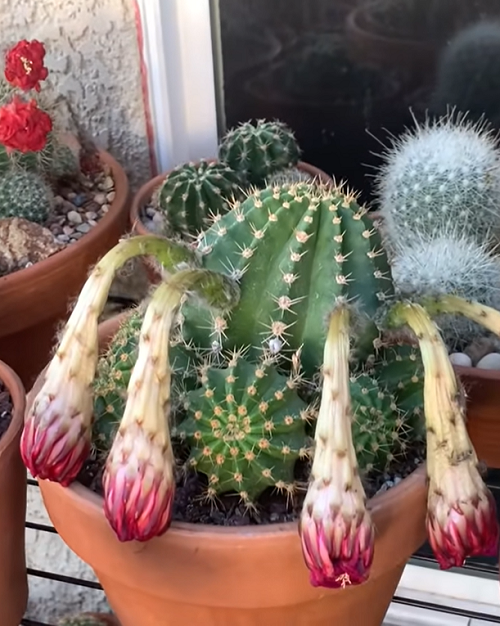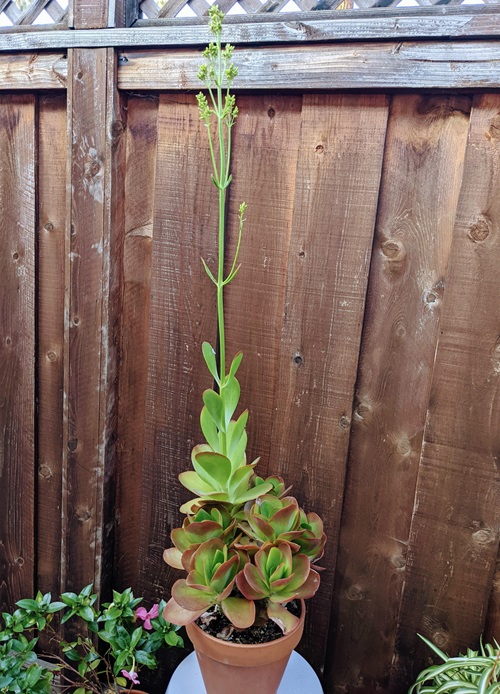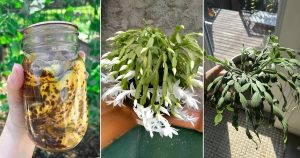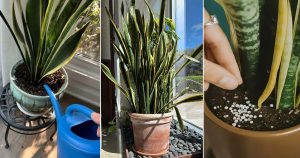Do Cacti Plants Die After Flowering? Find the answer, the actual truth, and learn more about these fascinating plants!
Cacti are resilient succulent plants with thick, waxy stems, sharp spines, and flowers. Their stems store water, which is why they are drought-tolerant and can survive in desert environments. But, have you ever wondered—Will the beautiful blooms on your cactus take your plant down with them, or will it survive after the flowering? Read on to get the answer!
Do Cactus Die After Flowering?
Do Cacti Plants Die After Flowering? No, that is not the real story. You will find contradictory views floating over the internet. Generally, the term ‘death bloom’ is not related to cacti. It refers to monocarpic plants. However, cacti are not monocarpic; they flower multiple times during their lifespan. You may find your cactus blooming late because of its flowering mechanism.
Some may be annual bloomers like Night-Blooming Cereus (Peniocereus greggii)—the blooming starts at dusk and disappears in the morning, which is why it is also known as Queen of Night. Perennial bloomers like Christmas Cactus.
Not only this, some cacti take many years to bloom. For illustration, Stetsonia coryne blooms on maturity, which takes at least 25 years. Meanwhile, the Saguaro Cactus produces flowers when they reach 2 m in height, which is approximately 30-50 years. So this is the case with cacti, which makes them different from other plant species.
Why Do Plants Die After Flowering?
Plants that exhibit this phenomenon of dying after flowering or death bloom are called monocarpic. Means they follow a lifecycle strategy of producing flowers, setting seeds, and then dying.
Their primary purpose is to invest their entire slot of stored energy in producing seeds and flowers so that their species will have long-term survival. And the mother plant dies due to depleted energy reserves. Agave and Sempervivum (Hens and Chicks) are a few examples of monocarpic, although they are not cacti.
Note: Not only this, but the death blooms of plants depend on other factors like inadequate watering, less supply of nutrients, or insufficient sunlight.
What to Do to Extend The Life of a Monocarpic Plant?
You can’t stop a monocarpic plant from dying after its death. The best you can do is to ensure the survival of its offspring or seeds by propagating and taking good care of them to continue the plant’s lineage.
You can also read the article on succulents that die after flowering just to get a profound understanding of the monocarpic and polycarpic plants.
Final Words!
So, do cacti die after flowering? Not usually! Unlike monocarpic plants that bid farewell after blooming, cacti can grace us with their flowers multiple times. Each cactus has its own unique blooming schedule, from the annual Night-Blooming Cereus to the decades-long wait for the Saguaro Cactus.
If you’ve experienced the joy of cactus blooms or have tips to share, we’d love to hear from you! Drop your thoughts and experiences in the comments below and let’s keep this succulent conversation blooming!










